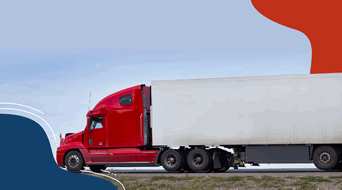What does consignee mean in shipping?
By correctly using shipping terms specific to this industry, everyone can be on the same page about their roles and responsibilities. One of the terms that you may have seen is "Consignee." Do you know what a consignee in shipping is? Do you understand how it affects your business freight shipping? You should!
What is a consignee?
A consignee in shipping is listed on the bill of lading (BOL). This person or entity is the shipment receiver and generally the owner of the shipped goods. Unless there are other instructions, the consignee is the entity or person legally required to be present to accept the LTL, FTL or specialty freight shipment.
The consignee is often confused with two other shipping parties. While these shipping terms can overlap, they can also be different people or entities as well.
- The shipper/exporter is the party that packs and prepares the goods being sent. They put together all of the necessary paperwork to ensure the shipment goes to the right person and right place. The shipper/exporter essentially plays the opposite role compared to the consignee.
- A notify party is the person or entity that must be notified when the products arrive at their final destination. The consignee and the notify party can be the same entity or person, but that is not always the case. The notify party can be the buyer, a shipping agent, or any other entity. This person or entity will also often arrange for customs clearance at the products' final destination.
Shipping Consignee vs. Notify Party Explained
The consignee and notify party can be the same entity, but they might not be. When they are not the same party, there are some pretty significant differences between the two roles.
- Only the consignee can claim goods from the carrier.
- The title of the goods is directly related to the consignee.
- Every shipment must have a consignee but having a notify party is optional.
- You can have multiple notify parties, but there can be only one consignee.
In general, notify parties are just like they sound — you notify them of the arrival of the shipment, but they cannot take ownership or title of the goods. If you want to know — who is the consignee? Look to the BOL. Both the consignee and the notify party (or parties) should be listed on the BOL (bill of lading).
When should you add a notify party to the BOL?
You do not always need a notify party on your shipment. Instead, a notify party is occasionally used in addition to having a consignee. A notify party is only necessary when you want someone else to know about the delivery of the products other than the entity or person that will accept the product. This can be especially helpful to add when preparing a blind shipment so that all parties are informed of the delivery.
Examples of potential notify parties might include:
- Any agent of the consignee who needs to know about the shipment, such as a Freight Forwarder or Clearing Agent
- Trader or indenting agent who brokered the deal or the shipment and wants to keep tabs on the shipment
- Insurance providers, such as ProfitProtect freight insurance, who have insured the shipment
- Any other entity that has an interest in knowing about the arrival and delivery of goods
While notification may be requested, most shippers do not accept any liability associated with the failure to notify promptly.
How do you change a consignee on a bill of lading?
You can often change the consignee on a BOL with a simple amendment. This process is easier the sooner that the parties can catch the discrepancy. In some cases, as with an international shipment, you might need to get approval from customs authorities. The carrier cannot amend the consignee if the name is not mentioned in shipping documents. Instead, the exporter or the customs broker will need to make that change.
The consignee meaning can be confusing. We're here to help!
Get more information about shipping, receiving, and a lot more from the team at Unishippers. Contact us to address all of your shipping needs!


